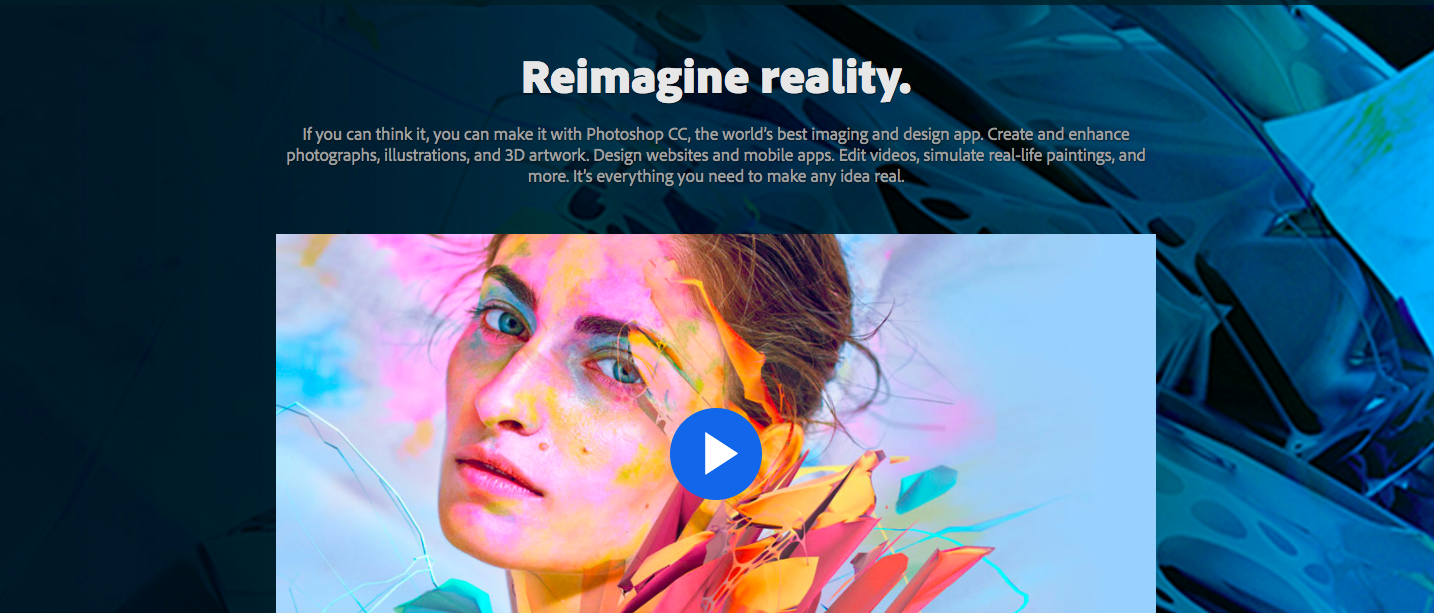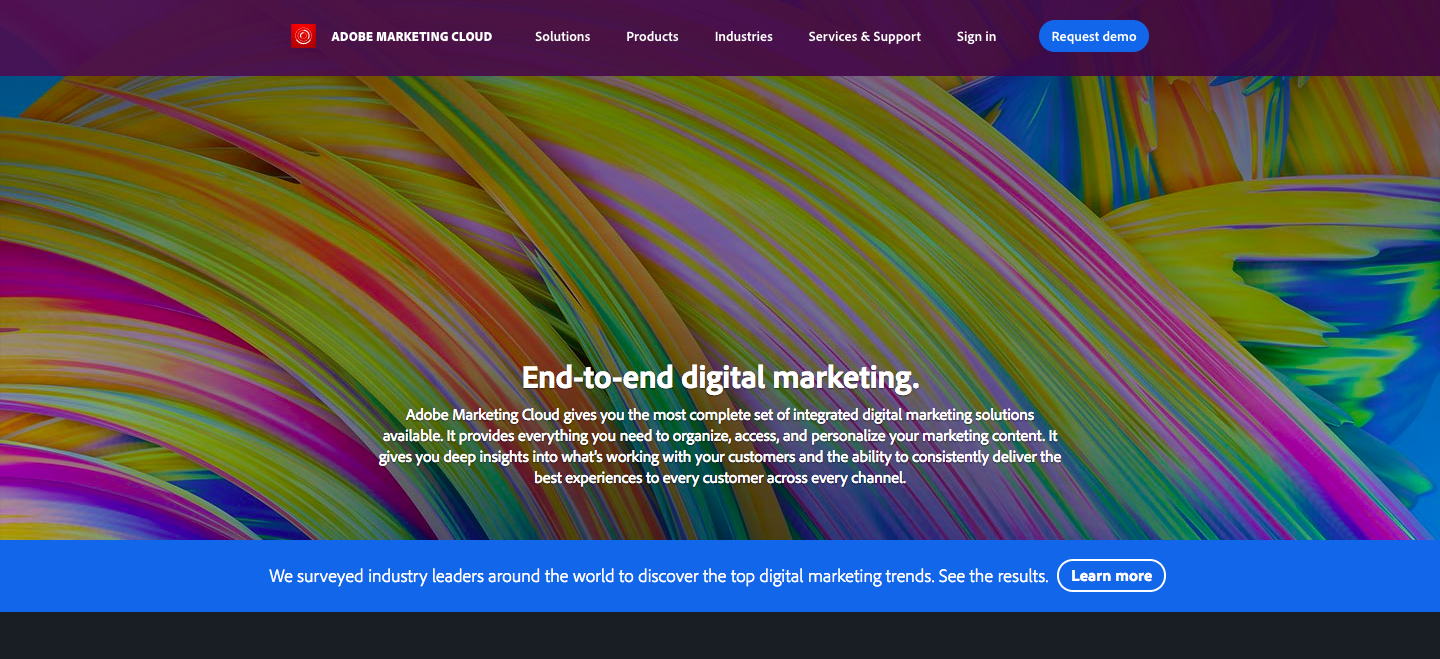What changes are coming to the web and mobile properties over the next 12 months?
What should you be watching out for, what trends should you be abandoning, and what should you be doing to stay relevant and to best serve your users?
We’ve racked our brains for 5 of the most important trends we expect will define web and mobile experiences in the next year.
1. Mobile will continue to be the heart of digital strategy
We may sound like a broken record, but once again we expect mobile will be the heart of digital strategy and investment.
Why? A few reasons:
-
Google is rolling out its mobile-first index in the first half of 2018, prioritising mobile-friendliness in search engine rankings like never before. This commitment is further fuelled by Accelerated Mobile Pages, or AMP, which Google prioritizes.
-
The NN Group, arguably the premier UX/UI design organization in the world reported that on Cyber Monday 2017, ecommerce sites STILL had 111% higher conversion rates on desktops vs mobile. Clearly, mobile optimization has a long way to go, and organizations are leaving serious cash on the table as those challenges go unaddressed.
-
Smartphone penetration in markets is reaching saturation point, particularly among younger generations. For instance, 92% of 18-29-year-olds in the US have a smartphone, with 17% of those reporting that their smartphone is their primary device.
How to stay ahead
-
Break away from the paradigm that people only use mobile devices for a limited number of tasks.
-
Double down on mobile investment, including AMP, and begin to shift strategic direction towards mobile-first.
-
Consider the mobile implication and execution of business decisions first, and then consider how it will impact other devices.
-
Focus on improving your existing mobile tech stack to create a delivery mechanism that works across multiple platforms – for instance, multi-platform publishing.
-
Use a mobile-first ethos to inform other business strategies, like what content you produce, how your sales funnel operates and engages, and what product expansions/revamps you take on.
2. Long-form value-add content is OUT
For years now, the recurring theme has been to expand content more and more. It seemed to start when Neil Patel wrote that 3,000 words+ content will drive more traffic and better results.
However, according to Hubspot, that’s no longer the case.
Hubspot argues that, in line with the aforementioned shift to mobile, longform content, ebooks, and PDF-sized content are no longer the most effective way to drive traffic.
Instead, their team suggests investing in video content, short and fun interactive content (quizzes, surveys, etc. ), and animations.
And this idea isn’t without any legs.

Video drives MUCH more engagement
37% of people will watch a video all the way to the end, and videos 90 seconds or less have a retention rate of 53%.
These might not sound like much until you compare them to other mediums. For instance, Buffer reported that 55% of visitors will read a blog for 15 seconds or less. And on Instagram, where the comparison of video vs photo is probably clearest, video consumption continues to grow rapidly as well as drive 51% more comments.
Video is what the people want
43% of respondents said they want to see more video content from marketers.
How to stay ahead
-
Focus on developing content in multiple formats, like adapting a case study into a video
-
Hire (or appoint) someone to lead video creation
-
Explore third party, stock footage, and freelance options to bring in skills you need, when you need them
-
Assume video is going to be a part of your content strategy and build out from there.

3. Saturated colours & bold fonts are going to inform web design


After years of minimalist trends and designs, it looks like there’s going to be a resurgence of bold, colourful, and fashiony website design.
Design leaders like Adobe are already setting this trend. Their homepage for their marketing cloud is bold and bright.
On the font front, the best example is Spotify. Spotify leverages the power of its font in a number of ways. First, its web design is completely anchored to the font, a somewhat off-beat decision given that they offer an audio product.
Second, Spotify’s font (or a close relative at least) is also the font used in their wordmark/logo, so it’s easy to spot “Spotify” copy.
And finally, its huge out of home campaigns anchored around user data uses the same font. That cross-platform and cross-medium unity, while small, does wonders to build brand value through consistency and repetition.
We can expect to see the same big, bold fonts and colours rolled out in other brands throughout 2018.
How to stay ahead
-
Think about how your brand can incorporate bright/bold colours into your design
-
Colour block your existing colour palette for a fresh, modern look
-
Don’t shy away from distinctive fonts for headlines and lead messages…
-
… but keep your CTAs, body copy and headings easy-to-read and hierarchical. After all, the the point of a font is to be read, not looked at.
4. Graphics will replace pictures more often than not
Scalable Vector Graphics, or SVGs, have been around for a long time, but their popularity has recently grown. We think we’re going to see a significant expansion of their deployment in 2018 for a few reasons:
First, graphics fit the bold colours and big fonts aesthetics better than pictures do (in general — there are lots of exceptions). So just to keep websites cohesive, we think graphics and iconography are going to play a bigger role.
Second, graphics have technical advantages over JPEGs or PNG images. Namely, they’re completely scalable, allowing them to adapt to suit whatever screen or resolution they’re viewed on. As screens grow more diverse with VR, AR, and wearables gaining prominence, that flexibility becomes more of a selling point.
And third, in line with more video and animations (we’ll get to animations in a minute) comes a greater demand for flexibility when it comes to movement. An image file needs to make another HTTP call if you want to add animation – an SVG file doesn’t. Plus, animated graphics are usually cheaper, easier, faster, and more flexible than their still-shot photo counterparts.
How to stay ahead
-
Invest in a solid graphics and animated resource when you’re looking at bringing on graphic design/web design staff (CSS, HTML5, and animation experience should all be considered assets).
-
Work to build digital properties that have the flexibility to support animations
-
Create content that uses these types of media (360-degree views, etc.)
5. Animations will fuel micro-interactions
Finally, we expect we’re going to see a significant expansion of micro-interactions across all companies in the coming year.
The micro-interaction trend, a tool used to smooth potentially rough patches of the user experience, has really taken off in social media and ecommerce.
Some examples in place now include:
-
When an ecommerce site has a small loading icon as your payment processes
-
When you hover over an image and it automatically zooms in
-
When you’re messaging someone and the three dots pop up to show you they’re typing
These types of interactions don’t do more than just reduce friction; they’re to UX what cup holders are to car sales. A small, minor detail that can be the deciding factor in customer satisfaction.
We think there’s going to be a lot more of them, and a lot of them are going to be fuelled by animations. Subtle animations like those used by InTurn fuel engagement and make websites a lot more fun without a lot of extra weight.

How to stay head
-
Evaluate your design and see where there’s opportunity for animation. Even something subtle can make a big difference to the experience
-
Look at the most popular indie games in the App Store / Play Store. Their landing pages regularly have amazing animations you can scrape for ideas and inspiration.
-
Consider investing in graphics over photography for in-content images. These open the door for future animations, whereas pictures are much less likely to be animated at a later date (e.g. during a content refresh)
Wrap up
We’ve said it before and we’ll say it again – we’re excited about 2018. There’s going to be lots of new tech, new ideas, and new ways of doing business that are going to come to fruition over the next 12 months.
In particular, we think 2018 is going to see significant increases in the quality of user experiences offered by brands. Better micro-interactions, animations, video, and, of course, robust mobile strategies are all going to play a role in making it a year where companies step up their digital game to embrace and commercialize advances that have crept into the fringes over the last few years.
Add a layer of aggressive design, and you’re looking at a pretty fun time.
We’ll see you there.
